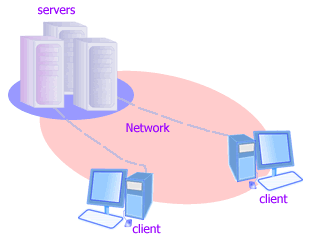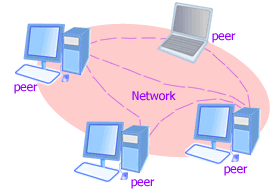Networking Guide : Architecture
Network architecture describes the relation among nodes in a
network.
A client-server network has a node that functions as a server which
provides resources (e.g. programs, disk, printers) for other
nodes (client computers) and manages clients access to the network
resources. Corporate networks are typically client-server with one or more servers
that store corporate information and employees'
computers as clients.

Picture: Client-Server Network
Client computers access programs or information provided by the servers.
A peer-to-peer network does not have a server, each node
(computer) in the network can share its own resources with other
nodes and determines other nodes access levels to its own
resources. Home networks are typically peer-to-peer. A
peer-to-peer network is also called a workgroup.

Picture: Peer-to-Peer Network
Each computer shares its resources with other computers.
|